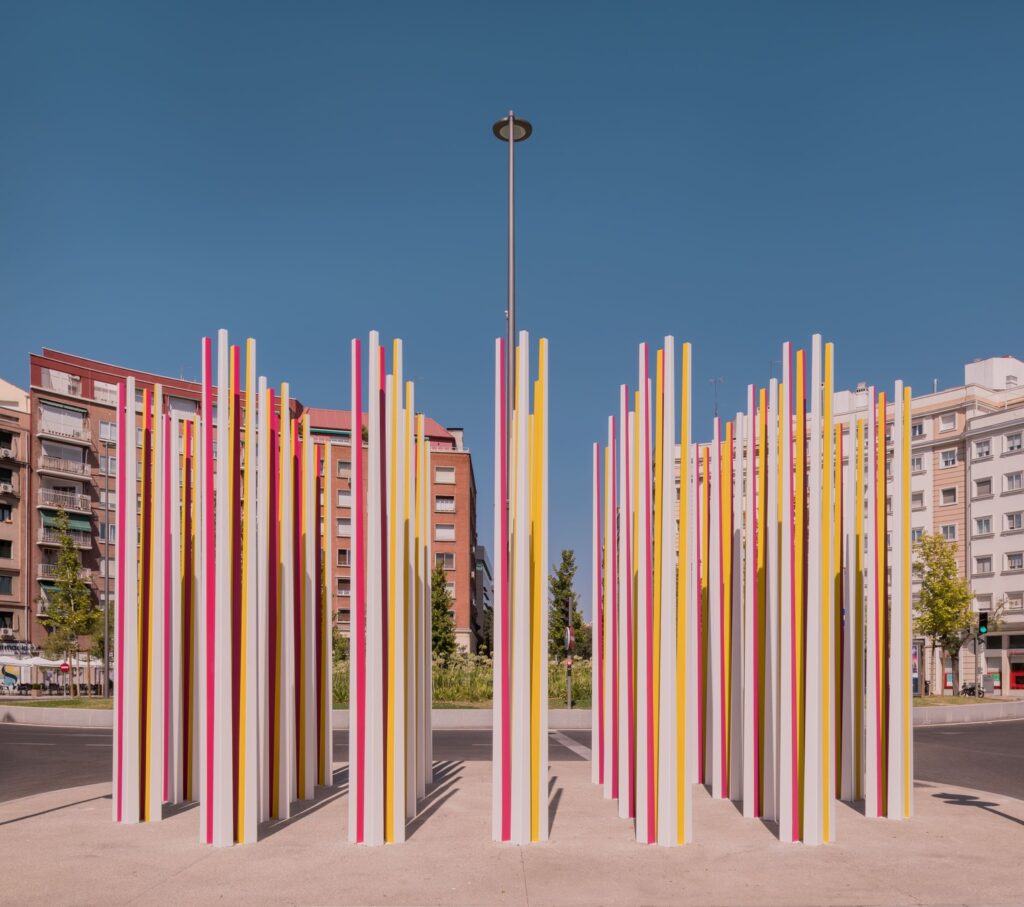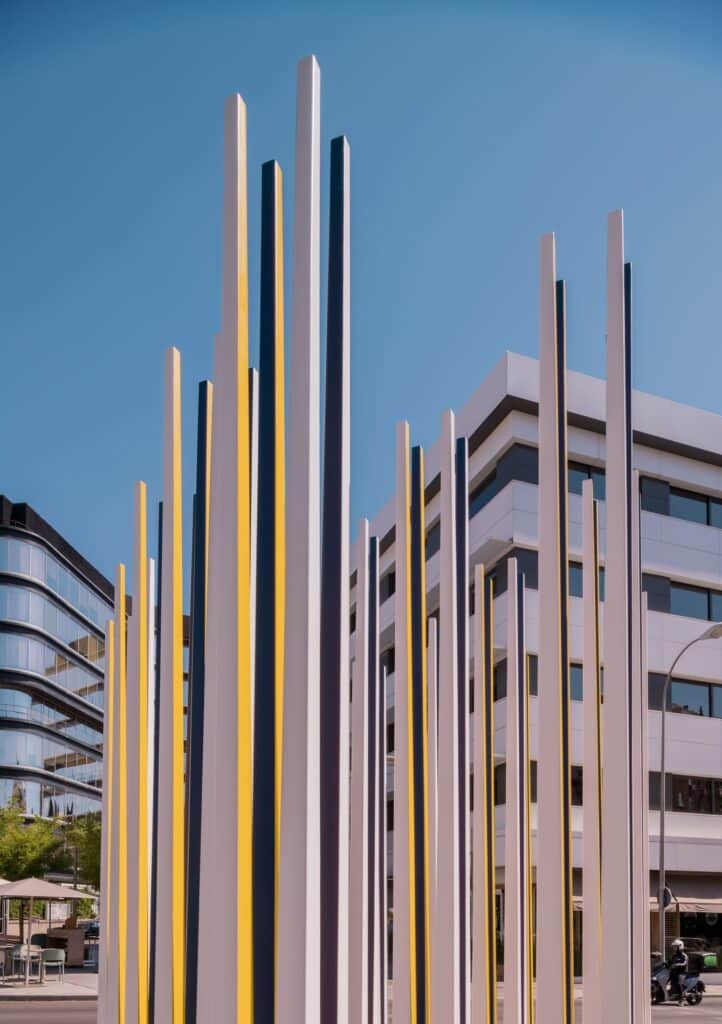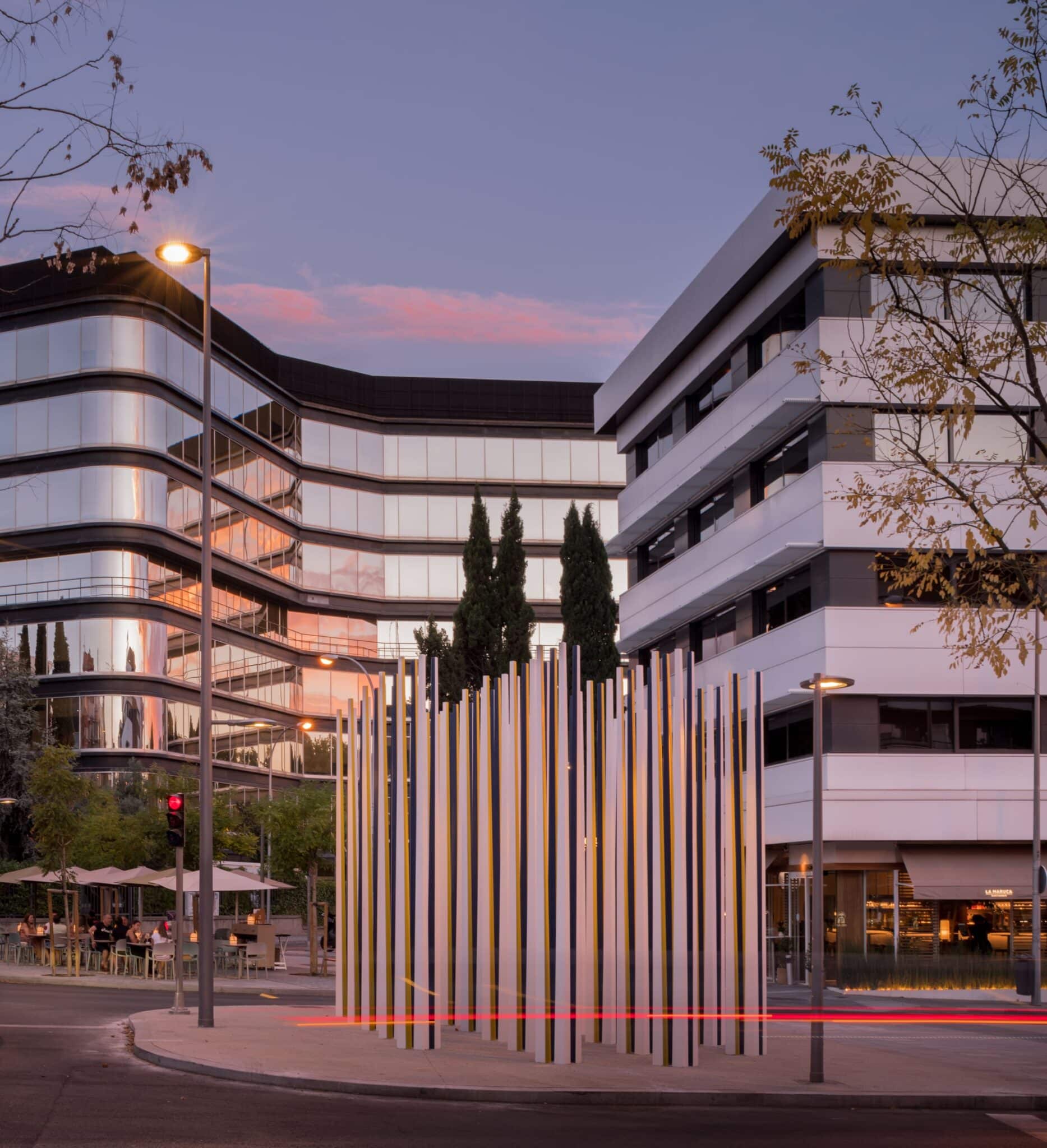The sculpture ‘Recuerdo Vivo’ (Living Memory), inaugurated in 2023, is located in Calle López de Hoyos, in the Chamartín district of Madrid. This artistic tribute, considered a contemporary monument, was selected through a competition organised by Madrid City Council’s Directorate General for Cultural Heritage, with the aim of paying tribute to the victims of terrorism and providing a space for reflection, memory and unity.
With an innovative and symbolically charged design, ‘Living Memory’ stands out as an example of memorial art that invites introspection on the concepts of memory, truth and resilience.

A Tribute to Remembrance and Memory
The significance of ‘Living Memory’ lies in its representation of memories as dynamic entities that evolve over time. Each memory is influenced by subsequent experiences, emotions and reflections, making them unique to each individual. However, this transformation does not detract from the authenticity of memories, but rather enriches them, allowing them to be a bridge between the past and the present.
The work highlights how our perception of truth and memory is conditioned by time and place. In this sense, ‘Living Memory’ reminds us that memories are not static; they are living processes that help us to understand our relationship with history and the people who have marked our lives.
This message is embodied in a modular and ordered design, where a single repeated element symbolises the universality of the human experience. The colours of the four-colour scheme inside the groupings represent the richness and diversity of shared memories, while the white exterior reflects the purity and innocence of lives taken by violence.

Design and Symbolism of ‘Living Memory’.
The sculpture consists of 96 stainless steel prisms, arranged in blocks of four. Each prism represents a life cut short by terrorism, while the blocks symbolise the strength of the community in the face of adversity. This geometric design not only seeks visual harmony, but also conveys a message of unity and resilience.
The stainless steel, painted rather than polished, provides a matt finish that reinforces the solemnity of the monument. This material, resistant to the passage of time, is a reminder of the permanence of memory, even in adverse conditions.
The work’s interaction with light is one of the highlights of its design. During the day, natural light creates constantly changing reflections, symbolising the passage of time and the transformation of memories. At night, artificial lighting highlights the details of the work, creating a contrast that evokes the duality of pain and hope.
The Historical Context of ‘Living Memory’.
The creation of this monument responds to the need to keep alive the memory of the victims of terrorism in Spain, a country that has faced tragic events throughout its recent history. The work not only pays tribute to those who lost their lives, but also seeks to be a meeting place where people can reflect on the values of unity, empathy and resilience.
This public tribute stands out as an example of collective reflection, integrating individual and community memory in a design that invites dialogue and introspection. ‘Living Memory’ is positioned as a work that transcends aesthetics to become a symbol of strength and hope.
Location of the Monument ‘Living Memory’ in Madrid
Located in the Chamartín district, on Calle López de Hoyos, this monument is in an urban setting that reinforces its significance as a place of memory and reflection accessible to all. Unlike other memorials located in more isolated spaces, the choice of this site in Madrid underlines the importance of integrating collective memory into the everyday life of the city.
This location not only facilitates access, but also allows the work to become a point of reference for the community. Furthermore, its location reinforces Madrid City Council’s commitment to the preservation of historical memory and support for the victims and their families.
Sculpture Creation Process
The development of ‘Living Memory’ was the result of collaborative work led by Sawu Studio, a team renowned for its ability to combine artistic sensitivity with technical innovation. Each prism was designed, painted and assembled with precision to ensure its harmonious integration into the whole.
The use of modular blocks allowed for efficient transportation and solid assembly on site. This methodology not only ensured the structural stability of the work, but also highlighted the attention to detail at every stage of the creation process.

‘Living Memory”: More than a Monument
In addition to its artistic value, ‘Living Memory’ has a profound emotional and social impact. Its design invites introspection and conversation about fundamental issues such as memory, truth and resilience. The work reminds us that shared remembrance is a powerful tool for building a more empathetic and united future.
The monument also plays a significant role in the work of victims’ associations, which work to keep alive the memory of those affected and to support their families. This tribute transcends the merely visual, becoming a symbol of the fight against oblivion and silence.
Credits and Collaborations in ‘Living Memory’.
El proyecto “Recuerdo Vivo” fue desarrollado por el equipo de Sawu Studio, cuya experiencia y dedicación se reflejan en cada detalle de la obra. Las imágenes que acompañan este artículo han sido cedidas por Javier de Paz García, a quien agradecemos por capturar la esencia de esta obra conmemorativa y compartir su perspectiva artística con nosotros.
Capa Esculturas ‘ commitment to this project reflects its mission to unite art, technology and technical precision to create works that transcend the visual and connect emotionally with people.

